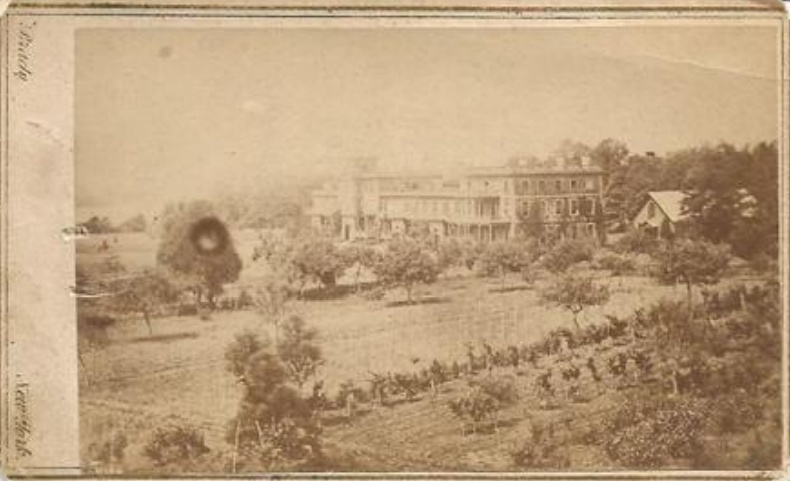Section #22 - The Southern States secede and the attack on Ft. Sumter signals the start of the Civil War
Chapter 256: The North Misreads The Southern Threat Of Secession
Fall Of 1860
Lincoln’s Election Represents A Fatal Blow To The Southern Economy

The notion that the North is out to harm the South’s agrarian economy is nothing new by 1860.
It surfaces first around 1830 with the protective tariff on finished goods imported from the UK which suppresses the demand and prices for their raw cotton exports. The “nullification” efforts led by South Carolina at the time signal the potential for secession.
A relative truce between the regions prevails until the Texas Annexation of 1845 and the Mexican War of 1846-7 opens up the prospect for new cotton plantations from the Mississippi River to California.
This would clearly be a boom for the Southern economy, but it is suddenly put on hold by Northern opponents of slavery. David Wilmot’s 1846 Proviso seeks to cleanse the west of blacks for the benefit of free white settlers and the “dignity of their labor,” while the abolitionist reformers call for the end of slavery in its entirety.
By this point the South has nothing to fall back on to insure its economic future.
Unlike the North, the shift to a modern industrial economy never takes hold in the South. In 1860, for example, it accounts for only 14% of the nation’s manufacturing workers, 20% of the railroad tracks and 13% of the banks.
Location Of Manufacturing Workers
| 1820 | 1840 | 1860 | |
| Northeast | 62% | 63% | 69% |
| Northwest | 7 | 14 | 17 |
| Border | 12 | 8 | 5 |
| Southeast | 16 | 11 | 5 |
| Southwest | 3 | 4 | 4 |
| 100% | 100% | 100% |
In turn the North produces 17 times as many textiles as the South, 30 times the leather goods, 20 times the pig iron and 32 times the firearms.
The reason for these differences is simple. Why should the South change course when between 1830 and 1860 it continues to enjoy truly remarkable gains in wealth from its traditional sources of revenue: the sales of raw cotton and the demand for “excess slaves” in the west.
The Westward Shift In The Slave Population
| 1840 | 1860 | # Ch | %Ch | |
| East Coast | 1,395.1 | 1,837.3 | 442.2 | 31% |
| Inland | 814.0 | 1,372.9 | 558.9 | 69% |
| Trans Miss R | 246.5 | 440.2 | 193.7 | 79% |
By 1860, there is no doubt as the South Carolinian John Henry Hammond says on the floor of the Senate, “Cotton is King!” The worldwide demand for the “white gold” has skyrocketed, with four-fold growth over the past three decades — as have profits to the planters and others across the supply chain.
Trends In Cotton Sales, Prices And Value (millions)
| Year | Lbs. Sold | Price/Lb | Total Value | Index |
| 1830 | 306.8 | $9.68 | $ 297 | 100 |
| 1860 | 1,712.0 | 7.30 | 1,218 | 410 |
Along with this growth in sales of raw cotton comes increased demand for the South’s “other crop” – the slaves who work the fields. While the U.S. slave population is doubling between 1830 and 1860, the “selling price” is growing even more rapidly, especially for “prime” field hands.
Trends In The Slave Population And Their “Value”
| Year | # Slaves | $/ Slave | Total Value | Index |
| 1830 | 2.0 mil. | $273 | $ 548.5 mil | 100 |
| 1860 | 4.0 | 778 | 3,076.2 | 561 |
Astonishingly, in 1860 the economic value of these slaves exceeds the invested value of all of the nation’s railroads, factories, and banks combined!
But for this Southern boom to continue, the new western territories must be open to more slavery and cotton plantations – and the Republican victory dashes all hope for this outcome.
Fall Of 1860
Republican Leaders Think The South Is Bluffing
After Lincoln’s win, conventional wisdom among Northern leaders is that the Slave Power will bluster about secession to try for concessions, but then back off in the end. The New York Tribune hypothesizes this outcome from the start:
The South could no more unite upon a scheme of secession than a company of lunatics could conspire to break out of bedlam.
Henry Seward agrees:
Who’s afraid? Nobody’s afraid. Nobody can be bought.
This perception is long held by Lincoln himself. In 1856 he says:
All this talk about dissolution of the Union is humbug, nothing but Folly.
Four years later, after his nomination, his mind is unchanged:
The people of the South have too much of good sense, and good temper, to attempt the ruin of the government…At least so I hope and believe.”
And he will continue this hope even after the election is won, in the famous closing passage of his Inaugural address:
We are not enemies, but friends. We must not be enemies. Though passion may have strained it must not break our bonds of affection. The mystic chords of memory, stretching from every battlefield and patriot grave to every living heart and hearthstone all over this broad land, will yet swell the chorus of the Union, when again touched, as surely they will be, by the better angels of our nature.
In the end, this profound misunderstanding in the North about the devastating effects their ban on slavery will have on the economic future of the South will lead to the death knell for the Union and for the 750,000 Americans who will eventually lose their lives during the course of the Civil War to follow.